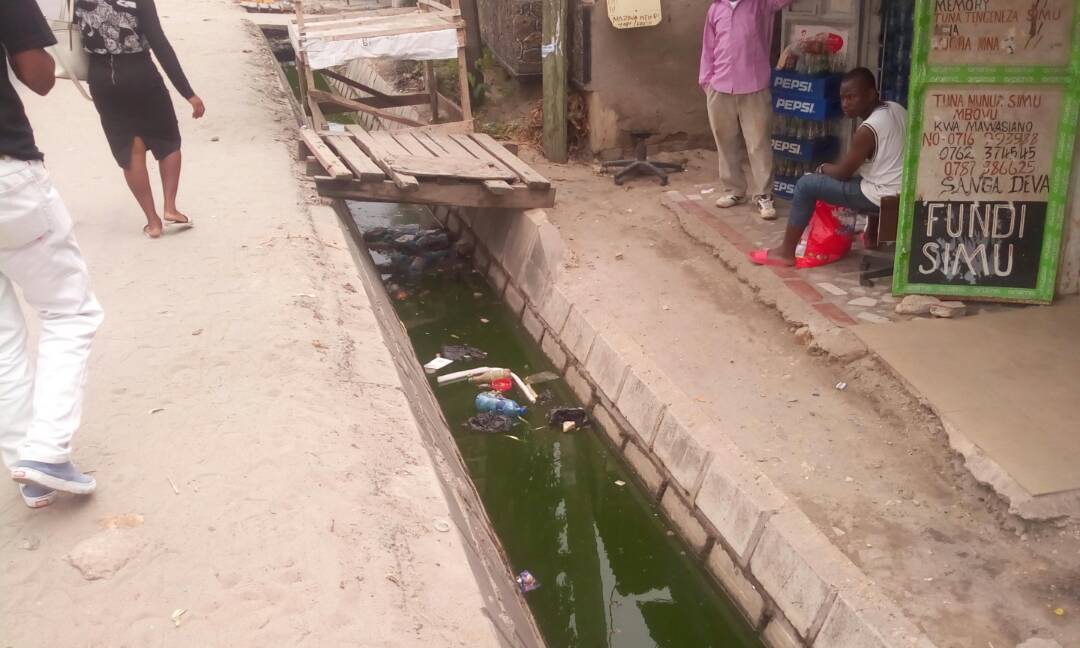This article was published in The Citizen Newspaper, Tanzania on 13th June 2023.
With cities growing in population and human activities at supersonic speed, it is a global concern that cities remain clean, safe, healthy and comfortable places to visit and live. It is beautiful making a living in a comfortable place where there is a high level of cleanliness, and where the health and safety standards are prioritized and assured.
Today we will speak about the maintenance of urban flowing water, encompassing rivers, tributaries, channels, drains, and others. The case study, in this case, will be the city of Dar es Salaam which has earned the glory of being the largest city in East Africa and the seventh largest city in the African Continent.
Dar es Salaam is named by National Geographic as the third fastest-growing city in Africa. The World Economic Forum named Dar es Salaam as the ninth fastest growing city in the world, based on the available local data and the United Nations population estimates.
The population of Dar es Salaam in 2020, which was then, two years before the census, estimated to be 6.7 Million was projected to have grown more than 100 per cent by the year 2035.
From the latest United Nations World’s Urbanisation Prospects, Dar es Salaam’s metropolitan population this year is estimated to be 7.7 Million which reflects a 5.01 per cent annual increase from the last year 2022, which was 7.4 million. That was also a 5.08 per cent increase on that of the year 2021 which was 7.04 million, an increase of 5.15 per cent on that of 2020.
Based on the average annual growth rate of 4.9 per cent, Dar es Salaam is predicted to become the second largest city by population in the year 2100, with a predicted population of 76 million people.

I must acknowledge that there is some effort being invested in keeping our urban rivers, drains and waters at minimal risk of exposing surrounding inhabitants to diseases, discomfort, and other harms. The population data are to remind us how important and urgent it is to keep the city in order.
Walking the streets of Dar es Salaam sent a warning signal to my observant self. The streets are not yet at their best. Pictures can be deceptive, especially on the internet. It is nice that we deal with issues as they are, and as they are seen with the naked eye.
Going from Segerea to Kariakoo for some shopping, I saw piles of dirt around Segerea, a very bad smell of rotten animal carcases and remains from the butcheries at Vingunguti Machinjioni polluting the air all over the place; the smell can make someone wish they don’t breath for the span of one kilometre along that road. It smells even worse around the river.
There are many blocked roadside drains which stink around the city, for instance around Buguruni kwa Miamani. Local vendors and visiting buyers add salt to the wound by pouring more dirt of all kinds in them. This happens in most of the city’s shopping areas.
In the named instances above, one common denominator is the fact that economic activities around these dirty places are going on as usual. Dirt and stinking drains and piles of rubbish have become normalised. This reflects a failure to prioritise the health, well-being, safety and comfort of urban residents and workers who live and work in these environments.
While there is still a whole lot to be done with the already available infrastructure, there is a need to examine the supportive capacity of the available infrastructure as placed against the possible population increase as well as the resultant increase in demand for safe, healthy and comfortable urban living.

We do not deserve to live in a filthy place. With better strategies, we can join hands and keep the city clean and safe. We need radical sensitisation, especially among young people that hidden places, lone roadsides, rainwater drains, rivers, etc. are not meant for careless littering or waste disposal.
There should as well be strong measures to curb industrial waste disposal into water bodies.
Alongside those, we need a better recycling policy so that recyclable materials do not accumulate so much in the streets. Local recyclers need to be given the support and motivation they need. Recyclable materials which are defective for our current recycling possibilities should be banned.
For instance, there is an energy drinks brand, which I won’t mention, in Tanzania whose plastic bottles are not taken by local recyclers because they have colour. Those bottles have become piles of advertisements for the company probably, but they make our streets dirty and polluted. Such companies should be asked to organise a way of picking up their bottles themselves since they cannot be used anywhere else.
We need laws and directives that support what works for us hic-et-nunc, here and now. We are on the verge of collapsing with piles of dirt all over Dar es Salaam water channels, drains, rivers and coasts if care is not taken and particular directives duly enforced.
